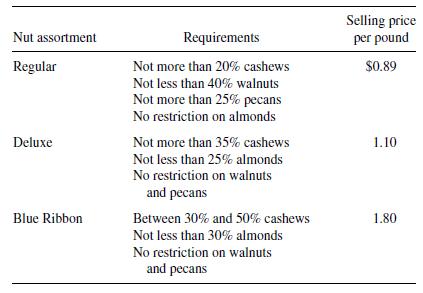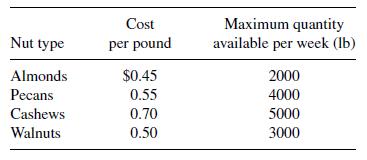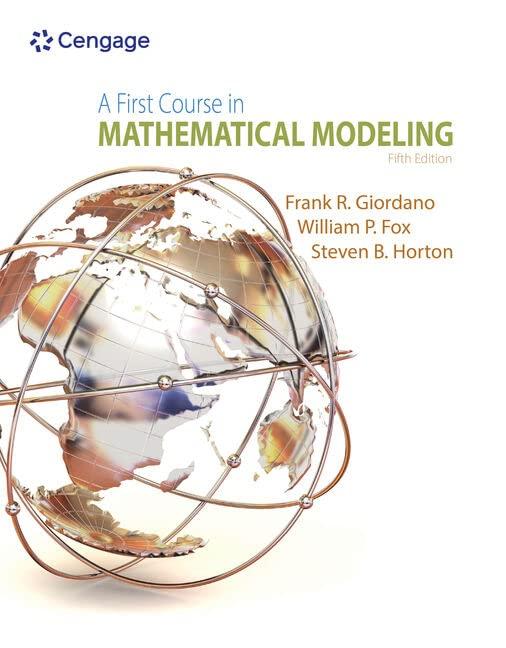A candy store sells three different assortments of mixed nuts, each assortment containing varying amounts of almonds,
Question:
A candy store sells three different assortments of mixed nuts, each assortment containing varying amounts of almonds, pecans, cashews, and walnuts. To preserve the store's reputation for quality, certain maximum and minimum percentages of the various nuts are required for each type of assortment, as shown in the following table:

The following table gives the cost per pound and the maximum quantity of each type of nut available from the store's supplier each week.

The store would like to determine the exact amounts of almonds, pecans, cashews, and walnuts that should go into each weekly assortment to maximize its weekly profit.
Formulate a mathematical model that will assist the store management in solving the mixing problem. How many decisions need to be made? For example, do you need to distinguish between the cashews in the regular mix and the cashews in the deluxe mix?
a. Identify the decision variables: What decision is to be made?
b. Formulate the objective function: How do these decisions affect the objective?
c. Formulate the constraint set: What constraints must be satisfied? Be sure to consider whether negative values of the decision variables are allowed by the problem, and ensure they are so constrained if required.
Step by Step Answer:

A First Course In Mathematical Modeling
ISBN: 9781285050904
5th Edition
Authors: Frank R. Giordano, William P. Fox, Steven B. Horton





